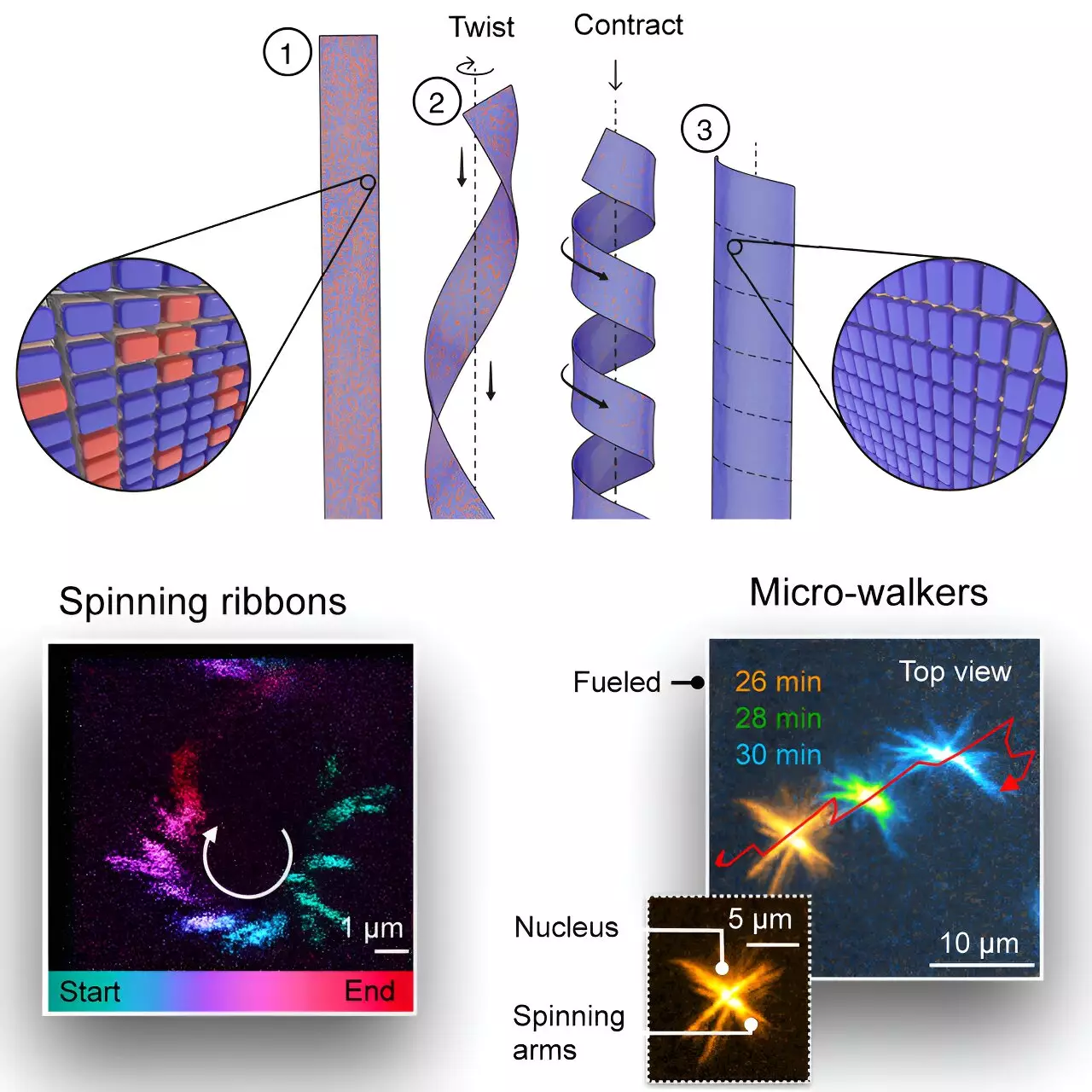A recent innovation from the Technical University of Munich (TUM) heralds an exciting advancement in the development of artificial motors at the supramolecular level. This groundbreaking research reveals a motor that operates similarly to molecular systems found in nature, specifically the biological mechanisms utilized by primitive archaea. What sets this new artificial motor apart is its ability to harness chemical energy for motion in a manner that has not previously been replicated synthetically.
Mechanics of Micro-scale Motion
The central piece of technology is a miniature ribbon constructed from specially designed peptide molecules, spanning a few micrometers in length and merely nanometers in width. This innovative design exploits the properties of chemical fuels to induce motion. Upon applying energy, the ribbon aligns and curls itself into tubular structures, subsequently engaging in rotational movement. This movement can be visually tracked using advanced microscopy techniques, providing a fascinating glimpse into molecular dynamics that were once confined to biological realms.
The significance of this motor lies in its ability to exert force on objects that are also on the micrometer scale. Researchers, including Professors Brigitte and Christine Kriebisch, alongside Job Boekhoven, have refined the ribbon’s mechanics to allow for variable rotation speeds and directionality. Control over these variables is determined by both the concentration of applied fuel and the structural arrangement of the molecular constituents. Such versatility not only showcases the potential for precision in molecular engineering but also suggests a pathway toward practical applications.
Future Possibilities with Nanorobots
The applications for these artificial motors are vast and revolutionary. One compelling prospect is the utilization of these motors in the development of nanorobots capable of navigating through biological environments, like bloodstream pathways. These nanorobots could be deployed for critical tasks such as locating and identifying tumor cells, thus offering a revolutionary strategy in cancer diagnostics and treatment. However, it is important to note that the current chemical fuel used in the motor is unsuitable for direct biological application due to potential toxicity, indicating a need for further research to engineer safer alternatives.
Research methodologies employed in this study also contribute to the understanding of force exertion at micro-scales, yielding insights that are pivotal for executing practical applications. There is a possibility that by aggregating multiple rotating ribbons, researchers might create “micro-walkers,” which could theoretically transport necessary compounds within a living organism, acting as a new form of drug delivery system.
This innovative advancement in supramolecular technology signifies a promising frontier in molecular robotics, merging the worlds of synthetic engineering and biochemistry. The capacity to mimic biological processes at the molecular level opens doors to unparalleled applications in medicine and beyond. As researchers continue to refine these systems, the world may soon witness the realization of practical nanorobots transforming the future of healthcare and technology. The journey from conceptualization to real-world implementation presents both challenges and opportunities, suggesting an exciting horizon for the field of nanotechnology.


Leave a Reply